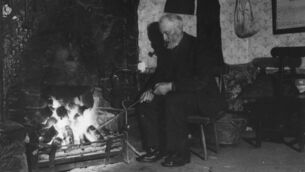The bittersweet story of the sugar beet

Carlow sugar factory closed in 2005, after 80 years in production.
Padraig Stevens lives in Tuam but he was born in north Sligo in 1946. He has been involved in music-making all his life, both as a performer and a songwriter. His songs have been recorded and performed by some of the top names in the Irish music industry, including Matt Keane, Eleanor Shanley, Mike Denver and Michael English. Most notable, however, is his association with the Saw Doctors.
One of Stevens’ songs in particular, , paints a nostalgic picture of Tuam. In the song, many aspects of Tuam life are referred to in subtle tones but none more subtle that the reference to the local sugar factory. Tuam beat and the sugar, sugar, might seem like a dancehall refrain, but it is really a homage to an industry that was central to the life of a rural town in tough times.
The Irish sugar industry was established in 1926 in Carlow as a private enterprise. The Sugar Manufacture Act, 1933 was later passed to promote self-sufficiency in sugar manufacture. This Act was brought on by a crisis in the industry and resulted in the nationalisation of sugar manufacture. Factories were then built in Mallow, Thurles and Tuam, and the company became known as Cómhlucht Siúicre Éireann, Teoranta, or the Irish Sugar Company, Limited.
Sugar beet is a plant whose root contains a high concentration of sucrose and is grown commercially for sugar production. Sugar beet is grown in climates that are too cold for sugarcane; in 2020, Russia, the United States, Germany, and France were the world's largest sugar beet producers. In February 2015, it was reported that sugar beet generally accounted for about 55% of sugar produced in the United States, with sugar cane making up the balance.
Sugar beet processing involves washing and slicing whole beets into thin strips, followed by diffusing the sugar from these strips using hot water to create a raw juice. This juice is then purified and evaporated to a thick syrup, and boiled to crystallise the sugar. Finally, centrifuges separate the sugar crystals from molasses, which is then dried and packaged for sale.
Sugar beet byproducts include beet pulp, used for livestock feed; molasses, a bitter liquid valuable in yeast, chemical, and pharmaceutical industries; and beet tops, the leafy part of the beet used for animal feed or as a natural fertiliser.
It is over 90 years since the Tuam Sugar Factory was officially opened. According to Mary Burke, writing in the (December 2024), in late 1932, a deputation of townsmen from Tuam travelled to Dublin to petition the Minister for Agriculture James Ryan to look favourably on the town as a suitable location for a sugar factory. Two years later, the Tuam facility opened.
At the Town Hall, addresses of welcome in Irish were presented to the Minister by John Burke, chairperson of Tuam Town Commissioners; Fr Jennings, on behalf of the local Gaelic League and Patrick Purcell, of Tuam Fianna Fáil Cumann. The party then moved on to the factory where Archbishop Gilmartin blessed the buildings in the presence of a large crowd. Dr Ryan expressed his delight at seeing the factory in full operation just a year after the first sod was turned.
In 2019, Johnny Burke delivered a lecture, The Tuam Sugar Factory, organised by the local Annaghdown Heritage Society. The theme of Burke’s lecture was 'The Impact of Tuam Sugar Factory on North Galway 1933-'87', and contained the following information.
At its peak, 250 people were employed full-time, while another 500-600 people gained seasonal work during the “campaign”. Like many other agricultural industries, growing, harvesting, and processing sugar beet was not glamorous. It was hard, painstaking work and, carried out in typical West of Ireland weather. While not glamorous work, it was nonetheless, work, provided at a time when paid work was very scarce.
The Tuam factory was a huge success, not just for the town itself but for the many hard-presses farmers in its hinterland. However, like other great ventures, its star rose, glowed brilliantly, but eventually faded and fell.
Of course, we didn’t have a sugar factory in the Ox Mountain region - not that we couldn’t have done with one. Our marginal farmers had to go to England for the seasonal work that Galway farmers had on their doorstep. Our little fields were hardly good enough anyway for growing and harvesting crops of sugar beet, year in, year out.
We had the Moy Drainage Scheme and a few small factories, like Basta and Tool and Gauge in Tubbercurry and later, Asahi in Killala. They were great employers and they gave employment that supplemented farm incomes. We also had our local dance halls and makeshift cinemas and our hopes and dreams were lived out there. It was like we had the beat, but we were missing that certain sugar, sugar.
There are no longer any Irish beet factories; all sugar processing plants in Ireland have been closed, including the last one in Mallow, in 2006. The sugar factory in Tuam operated between 1934 and 1987, a period of some 53 years. During that time the factory was a backdrop to the town. It improved the lot of local farmers and it gave employment to townspeople. The wages earned there provided for large families, education, home improvements and modest summer holidays.
Going back to the lyrics of , Padraig Stevens takes us down memory lane in a bittersweet reflection on a former Tuam, the people who lived there and the life they enjoyed.






